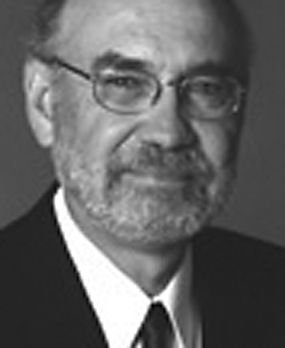Spencer F. Silver:
How he has transformed the scene
Inventor's persistence pays off
The sticky story behind Post-it Notes
Curiosity, persistence, imagination and patience — these are the essential ingredients for a good inventor, according to Spencer Silver. And he should know. Silver is the inventor behind the reusability of the most widely used office supply product: Post-it Notes.
In 1968, Silver was a senior scientist at 3M working to develop new classes of adhesives when he discovered an acrylic adhesive with unique properties. It was formed of tiny spheres that provided a pressure-sensitive adhesive with a high level of tack but a low degree of adhesion. In other words, it was strong enough to stick to surfaces, but left no residue after removal and could be repositioned over and over.
Perfecting and pushing the Post-it Note
The invention was not an immediate success, however. The company dismissed it as odd and useless — they wanted a stronger adhesive, not a weaker one. Over the next five years, Silver continued to see potential in this unique adhesive and tried to interest various departments at 3M. A marketable form of the product proved elusive, however, until he demonstrated his adhesive to colleague Art Fry, who happened to sing in the church choir. Fry was frustrated with the paper bookmarks he used to mark the songs in his hymnal because they didn't stay in place. He realized that Silver's reusable adhesive would provide precisely what he needed — a bookmark that would stay in place, without damaging the hymnal.
For several years, Silver and Fry made these removable bookmarks for use in their own offices, before convincing executives to try using them in 1977. 3M finally began test-marketing "Press 'n' Peel pads" in 1978, and after two more years of market research, the product was formally introduced into American stationery stores as Post-it Notes in 1980 — 12 years after Silver first discovered the adhesive.
"People often think you invent a product and voila, it's done," says Silver. "But that's just not the case. It generally takes many years and many people to make something happen."
Silver went on to work on many projects during his three decades at 3M, but none turned out to be as famous as his original invention.
The making of a scientist
Silver was born in 1941 and grew up in San Antonio, Texas. It was during his junior high and high school years when he developed a keen interest in science. He graduated with a B.S. in chemistry from Arizona State University in 1962 and a PhD in organic chemistry from the University of Colorado in 1966 before taking a position as a senior chemist at 3M that same year. During his career, Silver pursued research in branch block copolymers, protein immobilization, immune-diagnostics and pressure-sensitive adhesives. He filed 30 patents before retiring in 1996. Silver was inducted into 3M's prestigious Carlton Society, which recognizes the company's top scientists. He also received the Medal for Creative Invention from the American Chemical Society in 1998.

